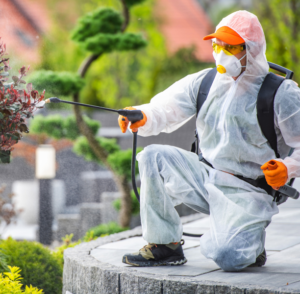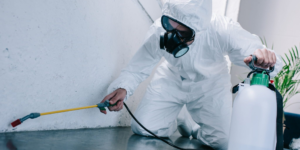Mice can cause a variety of problems in your home or business. They breed rapidly, spreading diseases such as hantavirus pulmonary syndrome and lymphocytic choriomeningitis.
You can help prevent an infestation by eliminating food and nesting materials inside and outside your home. Vacuum, wipe down surfaces regularly, and store foods in glass jars and metal containers that mice cannot chew through. Contact Mice Removal Texas now!

Rats and mice chew through wires, causing fire hazards and disrupting your power supply. They also gnaw through insulation, destroying it and increasing energy bills.
If you suspect a mouse problem, blocking all potential entry holes with wire wool or mouse mesh (available from some DIY and garden centers) is an effective preventive measure. You can also try spraying with a non-toxic repellent, like peppermint or spearmint oil (available at some garden centres and hardware stores). Hanging strips of cat litter in areas where rats or mice have been seen is another common deterrent.
A high quality snap trap is considered to be the most humane way of killing a mouse or rat, providing it is correctly positioned, set and maintained. These traps can be bought at some garden centers and DIY stores or made easily enough at home. Poisoning mice and rats can cause serious health problems, including cancers and heart disease. It can also take several hours, days, or even weeks for poisoned rodents to die, during which time they will suffer from intense pain and stress, unable to feed or care for young.
Rodenticides can also have a negative impact on the environment, as dead rodents will quickly decompose and produce bad smells or even attract new pests. These poisons are also often found in the gardens and homes of children and pets, who can then unwittingly consume them.
Live trapping and releasing mice or rats may seem more humane than poisoning, but it isn’t. Rats and mice held in live traps will experience moderate to severe welfare impacts, unable to move around freely or forage and being exposed to predators. They will also be unable to feed or care for any kits, if they have any, which can lead to starvation and death. The best option is to use a high-quality snap trap which, when triggered, will cause the rodent to suffer irreversible unconsciousness within 180 seconds, and can be instantly reset. These traps should be scrubbed, disabled and securely stored when not in use, especially during cold weather or times when they cannot be checked hourly.
Sealing Entry Points
Rodents can squeeze through holes as small as a dime, so it is important to identify and seal potential entry points. Once inside your home, mice can gnaw through wires, ductwork, and other materials and cause damage to your property. Moreover, these pests can breed quickly, turning a small infestation into a serious problem in a short time.
Proper mouse control involves creating a “exclusion plan.” This means that after mice are removed, your home must be properly sealed to prevent future infestations. This task is not easy and requires specialized knowledge and equipment. It is best left to professional pest control services.
Mice enter homes through cracks and crevices in walls and foundations, gaps around vents, and holes where pipes pass through the exterior of your house. It is essential to regularly inspect these areas and seal any gaps that you find. You can use steel wool or caulk to block these openings, and insulation foam can be used to close gaps where pipes enter your home.
During your inspection, look for signs of mice activity such as droppings or greasy marks. You should also be on the lookout for scurrying sounds or movement behind your home’s walls or in its basement or attic.
It is also a good idea to remove attractants from the area surrounding your home. Store food in sealed containers, store firewood away from your home, and trim trees and bushes that may serve as shelter for rodents.
Lastly, you should use weather stripping on doors and install screens on vents to stop mice from entering through these areas. However, even with these measures in place, it can be difficult to keep mice out of your home. This is because of the rapid rate at which they can reproduce and the fact that they are constantly searching for food, water, and shelter. To prevent recurrences of these problems, you should seek professional help when handling mouse removal and exclusion tasks. The right pest control experts can guarantee that your home is completely sealed and that the problem will not recur.
Preventing Recurrences
Leaving a mouse infestation unattended is dangerous to your health, the safety of your family and pets and the value of your property. Rodents will chew through electrical wires, damage paper and fabric, contaminate food and soil surfaces, and spread diseases and allergens. It’s much easier and more cost-effective to prevent mice infestations from the start.
Once mice get inside, they multiply rapidly and can cause expensive damage to your home or business. They also carry bacteria and viruses, such as Salmonella and Hantavirus. You can recognize a mouse infestation by droppings (small, dark and slightly larger than grains of rice) and gnawed holes in walls, floors, cupboards and food packaging. You might hear scratching or rustling noises at night, particularly when mice are active.
Mice are skilled at finding ways into buildings. They can squeeze through tiny openings, so it is essential to seal all cracks and crevices that might allow entry. Sealing gaps around doors, windows, pipes and utility lines is a simple way to deter mice from entering. You should also keep your yard clean of overgrowth, as it can provide a breeding ground for rodents and serve as an avenue for mice to enter.
Clutter provides mice with places to hide and conceal their nests. Regularly declutter your house and store foods in airtight containers. Clean up crumbs, spills and other potential food sources daily. Keep trash cans and garbage bins tightly sealed and away from the exterior of your house, as mice may gain access to them by climbing or digging through the sides.
The smell of certain scents, such as peppermint and clove oil, can repel mice. You can place cotton balls soaked in these oils in places where mice tend to frequent like drawers, cupboards and food storage units.
You can also use copper wool or caulking to fill and block any cracks that might allow mice to enter your living space. You should also regularly check for signs of a mouse infestation and act immediately to eliminate them before they grow out of control.
Chemical Treatment
Mice can cause numerous problems if not controlled in time, from gnawing electrical wires and fabric to chewing paper and documents. They can also spread diseases, contaminate food and litter the environment with their droppings that contain bacteria, viruses, parasites and more. Fortunately, professional pest control technicians have the experience and training to tackle even severe mouse infestations with a combination of preventive methods that includes trapping and chemical treatments.
Before applying any treatment, a professional Kernersville mice exterminator will first perform an inspection to check the extent of the problem. This includes checking if mice have burrowed in the walls, attic or basement and will take note of any signs of mice activity like scratching sounds, gnawed wires and contaminated food. It is important to remember that mice can also enter your home through open doors and gaps in the siding. Install door sweeps and repair any weather damage that could allow mice to slip inside.
Once the inspection is complete, a technician will recommend the most appropriate treatment method to deal with the mice infestation. Typical options include traditional snap traps, sticky traps and bait stations. Traps are the most humane option and can be used to capture individual mice or entire family groups. Sticky traps and bait stations are more effective in eliminating large numbers of mice but require more skill to set.
In some cases, the professional may recommend a more drastic measure, such as pheromones or fumigation. However, these options are more expensive and only recommended when the exterminator believes that the standard treatment is not sufficient. Fumigation uses toxic chemicals to completely fumigate the home and requires you to leave during the process. The most common pheromones are naphthalene, methyl bromide and phosphide.
The best way to prevent a mice infestation from occurring is by sealing the entry points and making your home less attractive. Store firewood and lumber in rodent-proof containers, cover all open vents in your home with wire mesh and store trash in a metal can with a tight lid. Regular annual or quarterly preventive treatments by a professional will also help.
